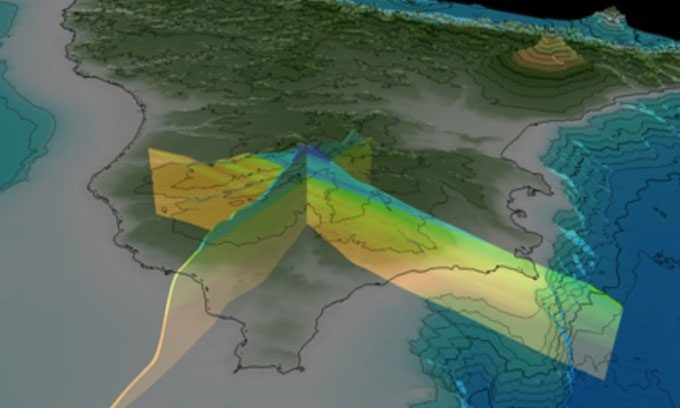Freshwater flowing through the Earth’s crust 6 million years ago is trapped at a depth of thousands of meters beneath the Hyblaean mountains in Sicily, forming an unchanged aquifer since then.
A significant amount of freshwater that permeated the Earth’s crust 6 million years ago remains buried deep beneath the mountain range in Italy, according to research published in the journal Communications Earth & Environment. This freshwater is likely trapped underground during the Messinian salinity crisis, when the Mediterranean Sea dried up after a global cooling event that caused sea water to accumulate beneath ice sheets and glaciers. This event may have allowed the seafloor to come into contact with rainwater that seeped through the Earth’s crust.

Diagram showing the amount of freshwater trapped in the Gela system. (Image: National Institute of Geophysics and Volcanology, Italy).
Rainwater accumulated and formed an aquifer extending between 700 – 2,500 meters deep beneath the Hyblaean mountains in southern Sicily, Italy, and has remained intact since then. In the new study, experts explored the deep groundwater within and around the Gela system. They constructed a 3D model of the aquifer and estimated it contains 17.5 km3 of water, more than twice the volume of Loch Ness in Scotland.
The research team then used the 3D model to rewind time and recreate the geological past of the area spanning the Hyblaean plateau and Malta in the central Mediterranean. Throughout the Messinian period (from 5.3 to 7.2 million years ago), freshwater seeped through the Earth’s crust to depths of several thousand meters below today’s sea level due to the salinity crisis. This crisis led to a drop in sea level by 2,400 meters below current levels in the Mediterranean.
The “fossilized” groundwater subsequently accumulated in a carbonate rock layer, acting as a type of sponge where fluids exist within the pores between rock particles, according to lead researcher Lorenzo Lipparini, a geologist at the University of Malta, Roma Tre University, and the National Institute of Geophysics and Volcanology of Italy. To validate this explanation, Lipparini and colleagues needed to identify a pathway for rainwater and snowmelt from the Mediterranean seafloor to the Gela system. The Malta Escarpment, an underwater cliff extending 300 km south from the eastern edge of Sicily, could be a direct connection, according to the research team. In other words, the missing pathway may lie within the cliff.
The Messinian salinity crisis lasted about 700,000 years and ended abruptly with a rapid rise in sea level, altering pressure conditions and halting the entire mechanism. Another possibility is that sediments and mineral deposits blocked the pathway along the Malta Escarpment during the salinity crisis, preventing seawater from mixing with freshwater in the Gela system for millions of years afterward. The research team hopes to extract this new freshwater source to alleviate water scarcity in Sicily.


















































